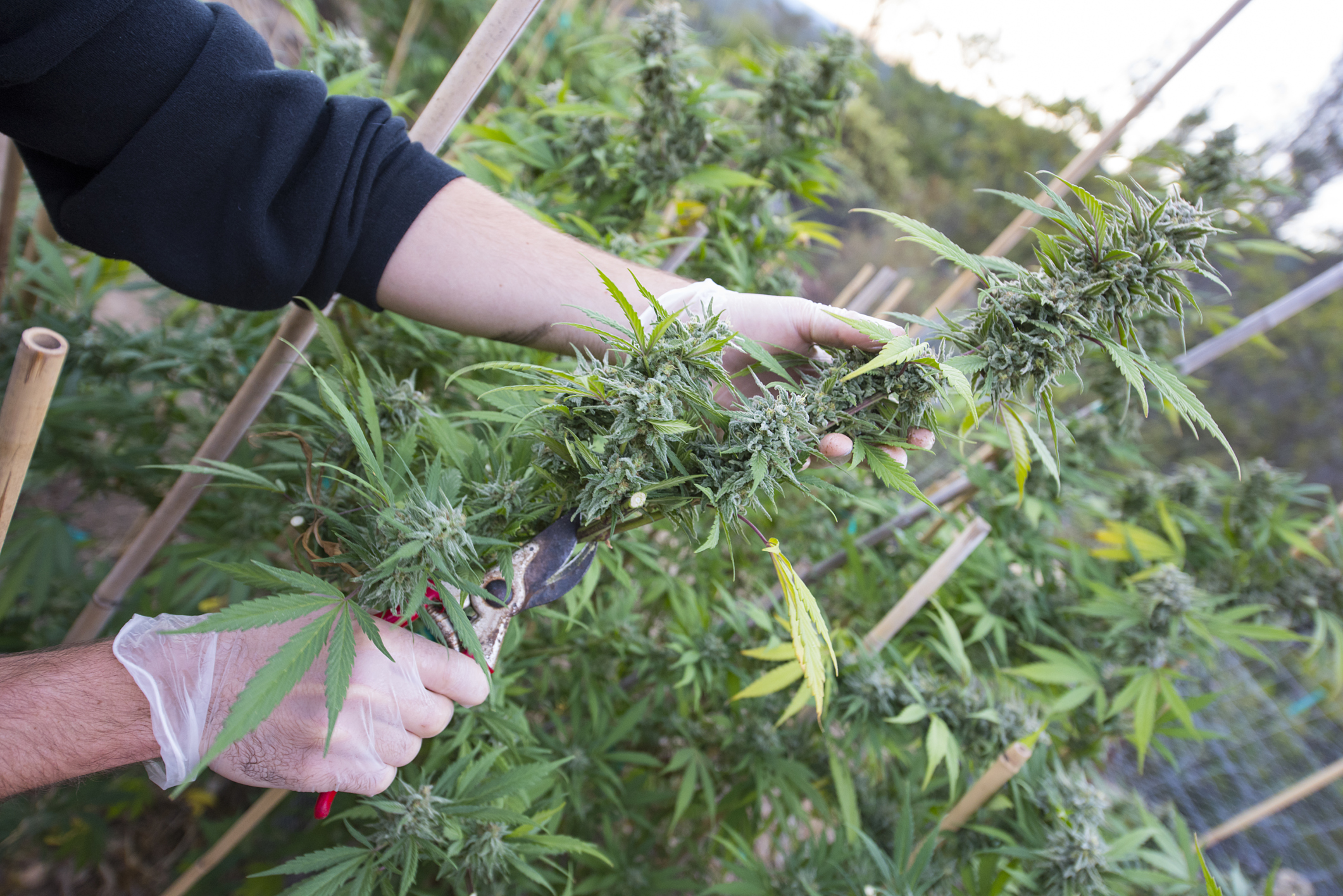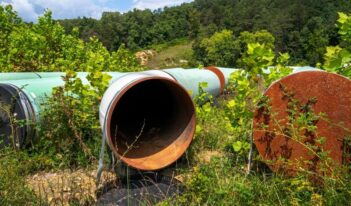
California’s proposed medical marijuana standards include environmental protection provisions.
California’s medical marijuana system is often described as the “wild west.” But those days appear to be over. Due to new legislation that California Governor Jerry Brown is expected to sign, the state will not only begin to regulate medical marijuana “from seed to smoke,” but will also impose new environmental standards on this growing segment of the state’s agricultural industry.
Despite being the first state to legalize marijuana for medical use, California had never before established a statewide regulatory program for the product, leaving oversight of what has become a billion-dollar industry primarily to local authorities. Currently, rules vary widely by jurisdiction, and the illegality of cannabis under federal law has meant that individuals and businesses involved in cultivating, manufacturing, transporting, and dispensing medical marijuana have operated in a “legal gray zone,” making their activities difficult to monitor.
As the scale of cultivation has increased and the consequences of a largely unregulated marijuana industry have become apparent, a growing chorus of stakeholders – including growers, patients, law enforcement, unions, and ecologists – have called for a statewide regulatory structure. Last week, California lawmakers passed three bills – AB266, AB243, and SB643 – that together create a comprehensive system for regulating medical marijuana. Everyone involved in cultivating, manufacturing, transporting, and dispensing the product would be subject to some form of regulation.
If enacted, the legislation would establish a Bureau of Medical Marijuana Regulation (BMMR) within California’s Department of Consumer Affairs, and give that department sole licensing authority for activities related to dispensing, transporting, and storing medical marijuana. To begin its work, the department would receive a loan of up to ten million dollars from the newly created Medical Marijuana Regulation and Safety Act Fund.
The bills also call on other state agencies to administer and enforce key provisions of the regulatory scheme, including measures aimed at reducing environmental damage from marijuana cultivation. Under the new system, the Department of Food and Agriculture would have to adopt rules governing cultivator licensing. It would also have to work with the Department of Pesticide Regulation to develop standards for pesticide use, and, more generally, ensure that marijuana cultivation “is conducted in accordance with state and local laws related to land conversion, grading, electricity usage, water usage, agricultural discharges, and similar matters.”
The inclusion of environmental provisions reflects a growing awareness in recent years of the environmental consequences of marijuana cultivation. Marijuana is a water-hungry crop; each plant consumes approximately six gallons of water every day. Given that around 60 percent of all marijuana consumed in the United States comes from California, this puts considerable strain on the water supply of an already drought-stricken state. To some degree, this is true of all agriculture; however, unregulated marijuana cultivation presents special challenges.
For crops that are unambiguously legal, the state monitors water use and requires farmers to meet conservation standards and obtain permits for activities likely to burden the environment. With marijuana, though, such controls have been difficult to administer or enforce. Although growers are subject to permitting requirements and land use ordinances, a study released by the California Department of Fish and Wildlife (CDFW) earlier this year found poor compliance. According to Scott Bauer, a scientist with CDFW and one of the lead authors of the study, only one percent of marijuana farms in cannabis-rich Humboldt County have the required water diversion permits. In the “Emerald Triangle” – which consists of Humboldt, Mendocino, and Trinity counties – some growers have reportedly become “environmental renegades, wasting or diverting precious water and disposing of potentially harmful fertilizers and chemicals in damaging ways.”
According to the study, the environmental impact of these practices is significant – and growing. Water used to grow marijuana is typically diverted from streams during the summer, when stream flows are already low. In three of the four northern California watersheds that the study assessed, the demand for water for marijuana cultivation in the summer exceeded minimum stream flows.
Although state officials say that water diversions have not seriously impacted California’s overall water supply, they have had implications for wildlife such as the coho salmon, which is already listed by the federal government as a threatened species. A smaller salmon population resulting from low stream levels or pesticide runoff has wide-ranging effects; it creates problems for the animals who feed on the fish as well as the commercial fisheries that depend on their availability.
Additional environmental consequences of unregulated marijuana growing may include land erosion, water pollution, and threats to biodiversity.
In the past few years, state and local authorities have begun to take steps to address some of these environmental issues. Last year, California passed a law expanding state enforcement authority, and providing funding for education and outreach to growers. Some of this money was used to send officials from CDFW and the State Water Resources Control Board “to identify and inspect water-thirsty pot gardens in sensitive natural settings.” The officials’ goal is to determine how much water and which fertilizers marijuana farmers are using, and to work with growers willing to reduce their environmental footprint. There have been similar activities at the local level; for example, the North Coast Regional Water Quality Control Board voted in August to adopt a regulatory order governing the use of water for cannabis cultivation.
Under the bills adopted by lawmakers last week, state authorities would gain additional tools for alleviating the environmental burden of marijuana cultivation. By defining cannabis as an agricultural product and establishing categories of cultivators based on grower size and growing conditions, the new regulatory scheme would help officials monitor and place restrictions on water diversion, irrigation systems, and pesticide use. Under AB243, regulators would be required to develop standards for pesticides and, more broadly, to “ensure that individual and cumulative effects of water diversion and discharge associated with cultivation do not affect the instream flows needed for fish spawning, migration, and rearing, and the flows needed to maintain natural flow variability.” Because these and other environmental protection measures will require additional resources, AB243 also directs the BMMR to allocate funds to support environmental enforcement and remediation efforts.
Assembly member Jim Wood, who authored AB243, praised the legislation’s “groundbreaking definition of cannabis as an agricultural product” – a definition that subjects marijuana to the same types of environmental regulations as the state’s other crops. Should marijuana become legal for recreational use in the future, the environmental rules created for the propagation of medical marijuana could guide regulators in their efforts to balance the demands of a rapidly growing industry with the resource constraints and environmental concerns related to that industry’s growth.



